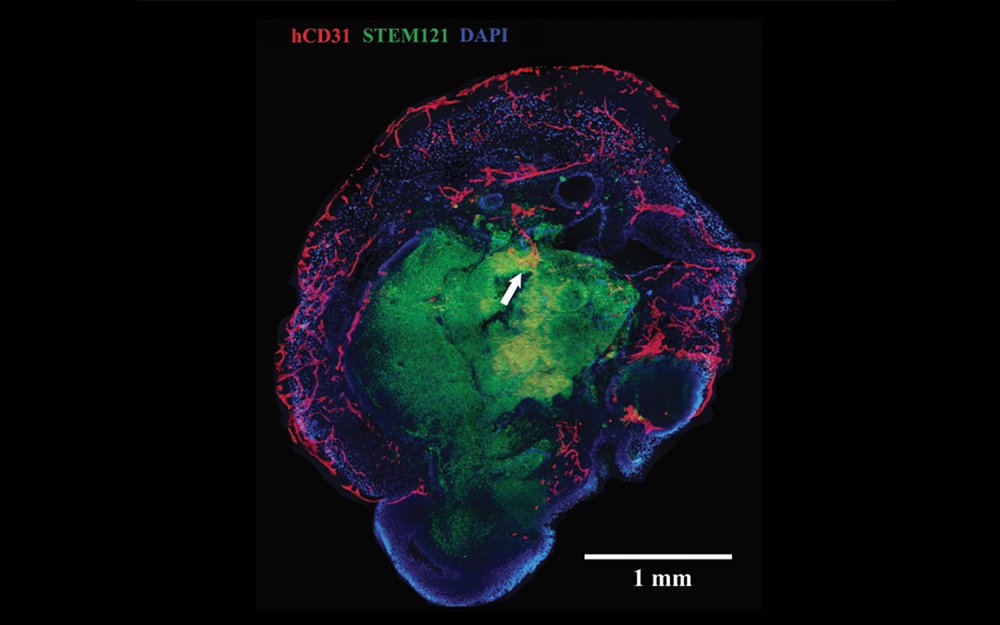Tiny, Lab-Grown Minibrains Sprout Blood Vessels
Scientists have succeeded in nurturing the growth of blood vessels in minibrains that were developed from human stem cells, and they grew both the minibrain and the blood vessels from stem cells that originated from the same patient, according to a new study.
The simplified, tiny organ, or organoid, was grown in the lab and coated with endothelial cells — specialized blood vessel cells — then transplanted into a mouse for two weeks. During the minibrain's time in vitro and then in a living body, the endothelial cells grew into blood vessels and even capillaries, poking their tendrils into the organoid's inner core, the study authors reported. (Capillaries are very fine, narrow blood vessels.) [11 Body Parts Grown in the Lab]
Despite what their name implies, lab-grown minibrains aren't miniature versions of a working brain. Rather, they're functioning, microscopic models of a brain — up to a few millimeters in length — with 3D structure and containing a variety of brain cells that can transmit chemical messages, Live Science previously reported.

That's where blood vessels come in: Blood vessels could not only help the minibrain survive by delivering vital oxygen and nutrients, but could also encourage it to keep growing. So, the scientists set out to investigate whether vascular cells would be able to penetrate deeply enough into the minibrain to nourish its innermost layers — and if they could do so without disrupting the organoid's growth.
They bathed growing minibrains in 250,000 endothelial cells, left them to grow in vitro for about three to five weeks and then transplanted them into mice for two additional weeks. By the time the organoids were ready to be transplanted, human blood vessels had developed all around the minibrains, with capillaries reaching into the outer layers, according to the study. And after they were transplanted, the capillaries extended deeper, into structures within the organoids' centers.
While minibrains are smaller than a bedbug, they're still a big deal to scientists. Though small, they offer researchers the opportunity to observe how different types of brain cells interact with each other, and they can help with the study of certain brain disorders.
This is the first study to describe blood vessels and capillaries grown in a minibrain from the patient's own endothelial cells, though the scientists couldn't say for sure if the blood this network carried was human or rodent. Further research will also be necessary to determine how effectively newly grown blood vessels can nourish and sustain an organoid, the researchers reported.
Sign up for the Live Science daily newsletter now
Get the world’s most fascinating discoveries delivered straight to your inbox.
The findings were published online March 21 in the journal NeuroReport.
Original article on Live Science.

Mindy Weisberger is an editor at Scholastic and a former Live Science channel editor and senior writer. She has reported on general science, covering climate change, paleontology, biology and space. Mindy studied film at Columbia University; prior to Live Science she produced, wrote and directed media for the American Museum of Natural History in New York City. Her videos about dinosaurs, astrophysics, biodiversity and evolution appear in museums and science centers worldwide, earning awards such as the CINE Golden Eagle and the Communicator Award of Excellence. Her writing has also appeared in Scientific American, The Washington Post and How It Works Magazine. Her book "Rise of the Zombie Bugs: The Surprising Science of Parasitic Mind Control" will be published in spring 2025 by Johns Hopkins University Press.










